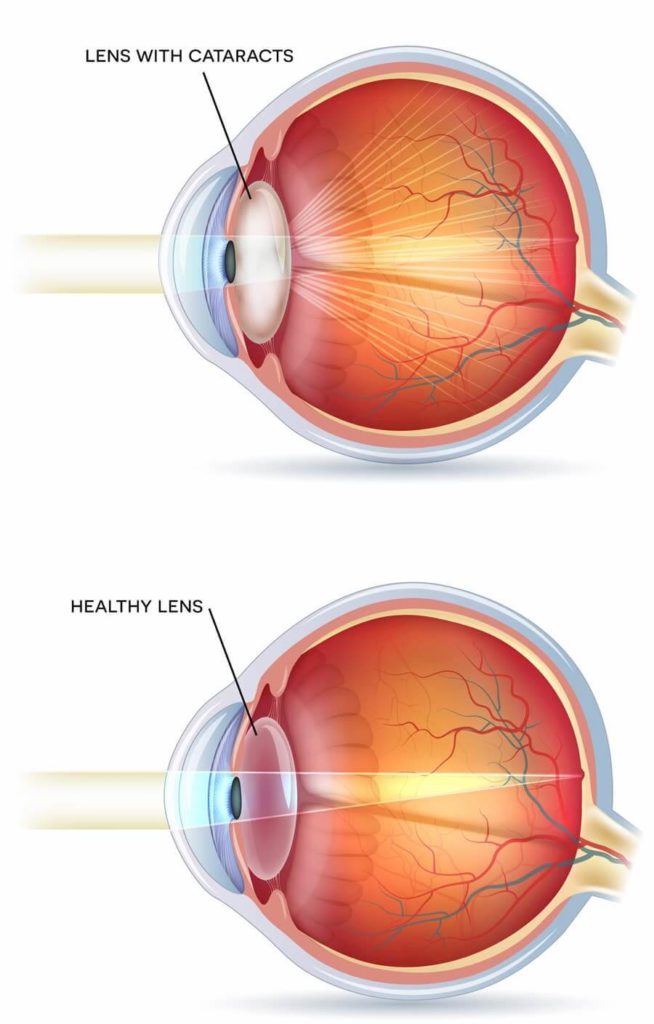 Your eye works a lot like a camera. Light rays focus through your lens on the retina, a layer of light sensitive cells at the back of the eye. Similar to film, the retina allows the image to be “seen” by the brain. But over time the lens can become cloudy and prevent light rays from passing clearly through the lens. This cloudy lens is called a cataract. The typical symptom of cataract formation is a slow, progressive, and painless decrease in vision. Other changes include:
Your eye works a lot like a camera. Light rays focus through your lens on the retina, a layer of light sensitive cells at the back of the eye. Similar to film, the retina allows the image to be “seen” by the brain. But over time the lens can become cloudy and prevent light rays from passing clearly through the lens. This cloudy lens is called a cataract. The typical symptom of cataract formation is a slow, progressive, and painless decrease in vision. Other changes include:
- blurring of vision
- glare, particularly at night
- frequent eyeglass prescription change
- a decrease in color intensity
- a yellowing of images
- in rare cases, double vision.
Ironically as the lens gets harder, farsighted or hyperopic people experience improved distance vision and are less dependent on glasses. However, nearsighted or myopic people become more nearsighted or myopic, causing distance vision to be worse. Some types of cataracts affect distance vision more than reading vision. Others affect reading vision more than distance vision. It is not necessary to wait for the cataract to be “ripe” anymore. We suggest for patients to get evaluated as soon as the cataract is interfering with their daily activities.
